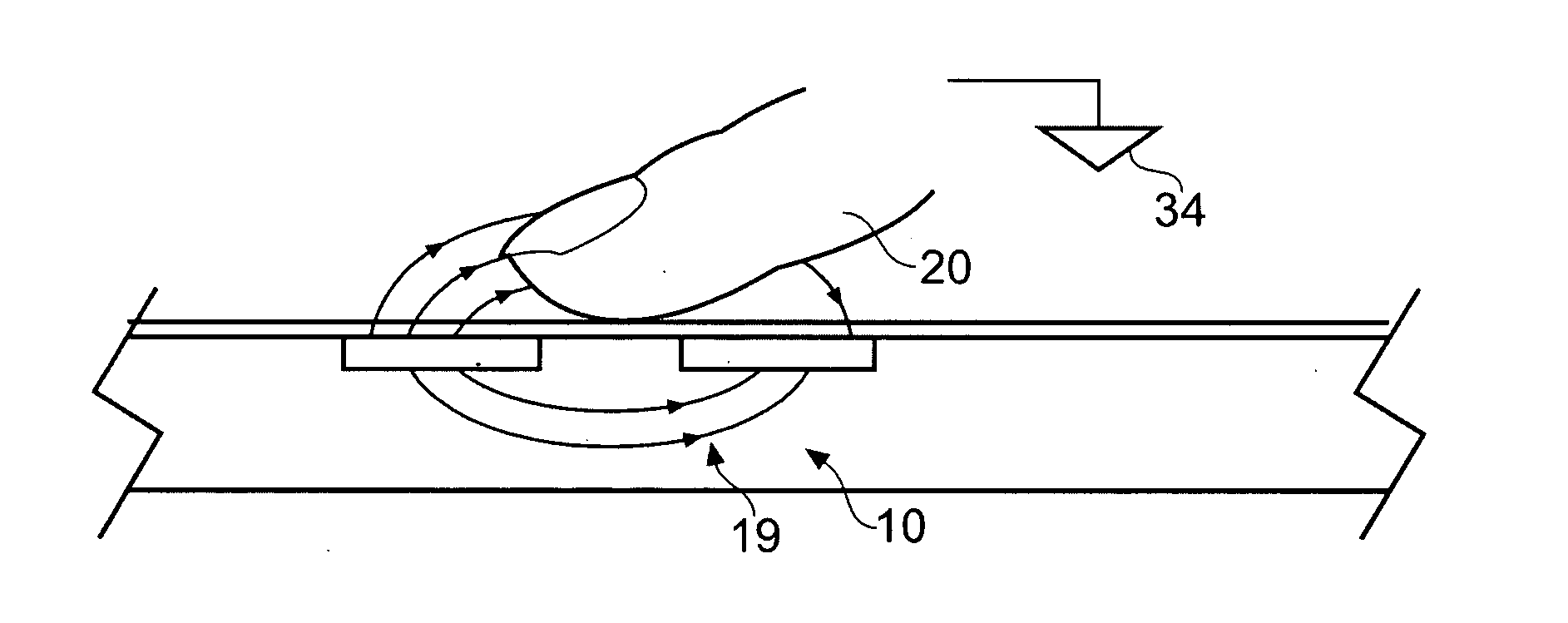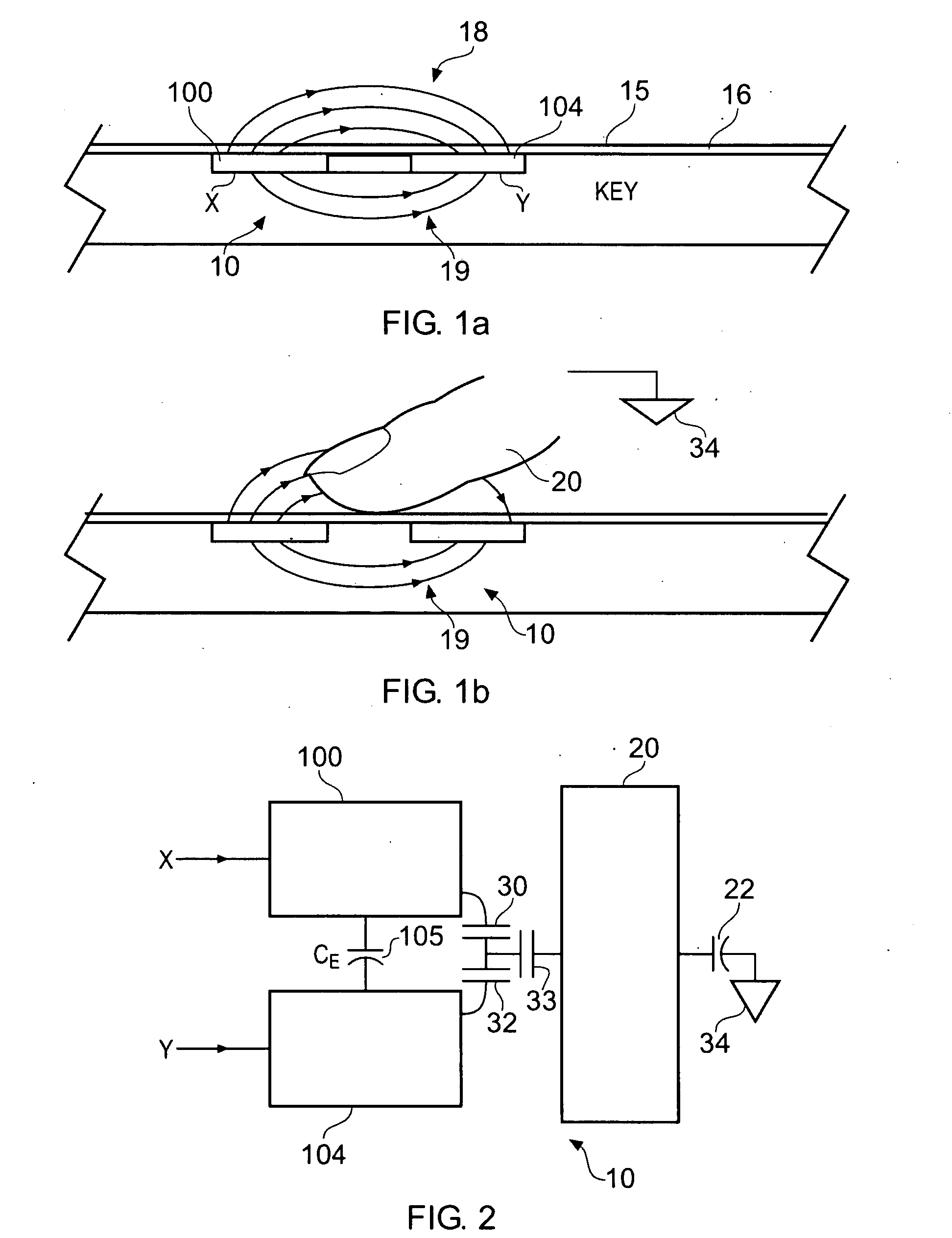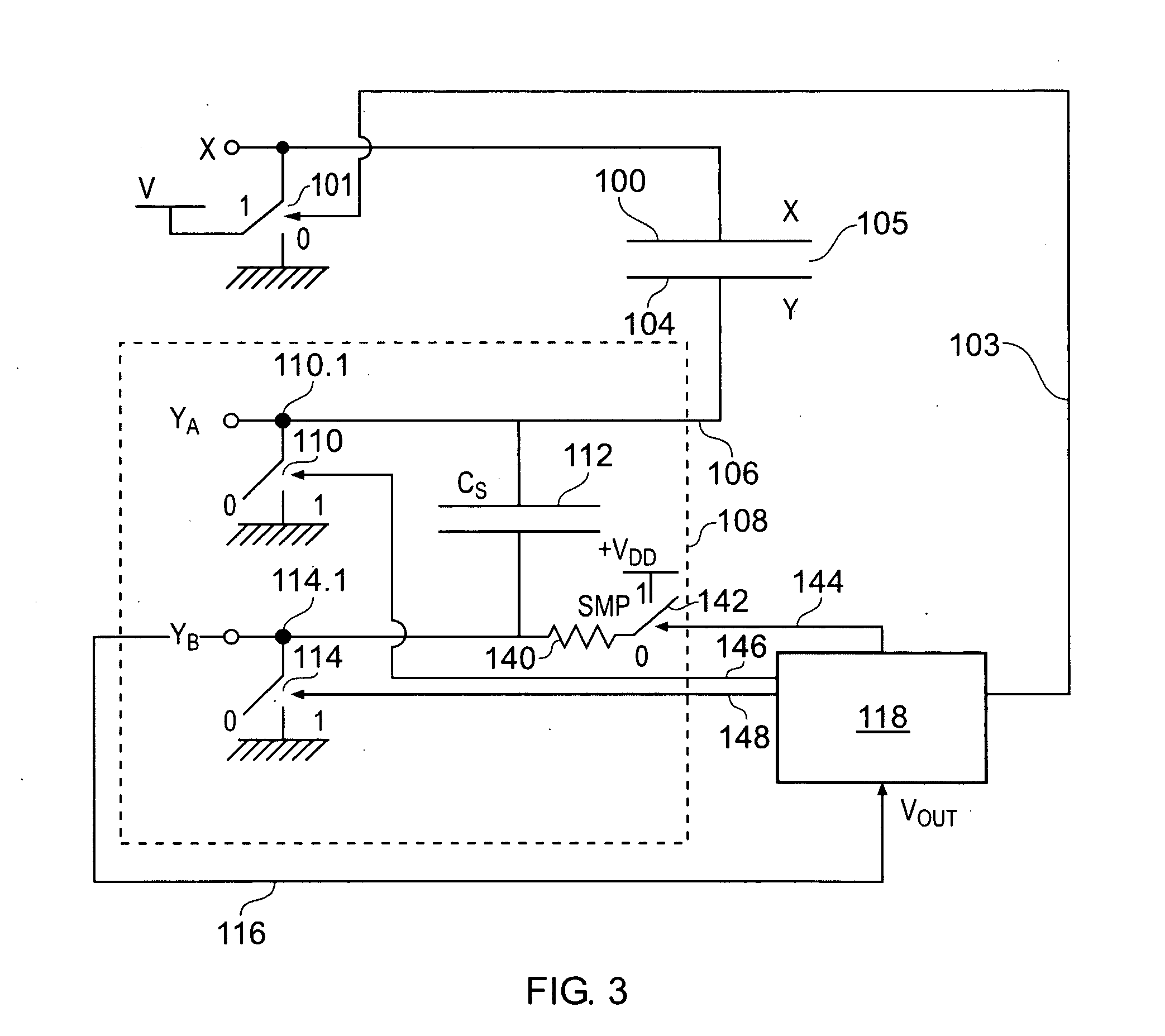Noise Handling in Capacitive Touch Sensors
a capacitive touch sensor and capacitive technology, applied in noise figure or signal-to-noise ratio measurement, instruments, resistance/reactance/impedence, etc., can solve problems such as the characteristic switching noise of liquid crystal display (lcd), the challenging environment for detecting a charge change, and the use of touch sensors on a mobile phon
- Summary
- Abstract
- Description
- Claims
- Application Information
AI Technical Summary
Benefits of technology
Problems solved by technology
Method used
Image
Examples
Embodiment Construction
[0038]FIG. 1a is a schematic cross-section through a touch sensitive control panel 15 in the absence of an actuating body, typically a user's finger or stylus.
[0039]FIG. 1b corresponds to FIG. 1a, but shows the same cross-section in the presence of an actuating body in the form of a user's finger.
[0040]The touch sensor shown in FIGS. 1a and 1b corresponds to an example in which a pair of transverse electrodes form a touch sensor. As shown in FIG. 1a a pair of electrodes 100, 104 which form a drive or X plate and a receiving or Y plate in the following description are disposed beneath the surface of a touch sensitive control panel 15. The electrodes 100, 104 are disposed beneath a dielectric layer 16, for example a glass or plastics panel. As shown in FIGS. 1a and 1b the touch sensor 10 is arranged to detect the presence of a body such as a user's finger 20 as a result of a change in an amount of charge transferred from the Y plate 104. As shown in FIG. 1a when the X plate 100 is cha...
PUM
 Login to View More
Login to View More Abstract
Description
Claims
Application Information
 Login to View More
Login to View More - R&D
- Intellectual Property
- Life Sciences
- Materials
- Tech Scout
- Unparalleled Data Quality
- Higher Quality Content
- 60% Fewer Hallucinations
Browse by: Latest US Patents, China's latest patents, Technical Efficacy Thesaurus, Application Domain, Technology Topic, Popular Technical Reports.
© 2025 PatSnap. All rights reserved.Legal|Privacy policy|Modern Slavery Act Transparency Statement|Sitemap|About US| Contact US: help@patsnap.com



